
Garlic
70 - 75 Per Kg
1 Ton (MOQ)
Garlic

Sweet Corns
Get Price Quote
We are a topnotch frozen Sweet Corn Manufacturer in India. As one of the leading sweet corn manufacturers and suppliers, we select fresh and juicy corn kernels and peel them manually. We preserve whole sweet corn with utmost care so as to preserve it for a longer time period. These sweet corns are packed instantly in order to retain their taste. You can have them any time by taking them out from wrappers. We take utmost care of hygiene while processing and packing them.
Best Deals from Fresh Vegetables
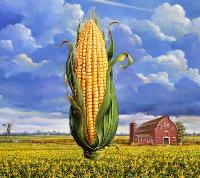
Yellow Corn
Get Price Quote
We are associated with prominent manufacturers and thus, bring forth quality Yellow Corn. The Yellow Corns, offered by us, are grown in the best weather conditions following the industry defined guidelines. Moreover, the cultivation of Yellow Corn is done without using the harmful chemicals. Buyers can acquire the nutritional Yellow Corn at market-leading price from us. We are a trusted name as Yellow Corn Supplier in Madhya Pradesh (India).

Fresh Onion
9 - 12 Per Kilogram
10000 Kilogram (MOQ)

Dry Ginger
Get Price Quote
We are the leading exporters of Dry Ginger. Dry Ginger has wide applicability in food supplements, food flavoring and in pharmaceutical formulations. We offer well dried & specially graded dry ginger.

Freeze Dried Vegetables
Get Price Quote
1 Tons (MOQ)

Chick Peas
Get Price Quote
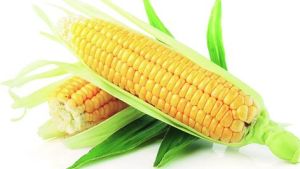
Yellow Maize
Get Price Quote
We are engrossed in supplying of Yellow Maize from Indore, Madhya Pradesh. We source Yellow Maize from our domestic vendors who assure for its quality and purity. High nutritional content and freshness make our Yellow Maize high in demand among the buyers. Yellow Maize is used for human consumption and as an animal feed too. We use advanced machinery for the packaging of Yellow Maize.

Chick Peas
Get Price Quote
Seablue international is one of the best exporting & supplying company of high quality chick peas in india.
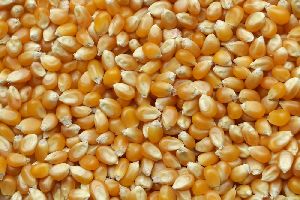
Yellow Corn (Maize)
20 - 25 Per Kilogram
25 Tons (MOQ)

Ginger
Get Price Quote

Organic Baby Corn
90 Per Kilogram
1 Kilogram (MOQ)

Split Green Peas
Get Price Quote
Whole green peas which are husked (or dehulled) and processed to be split in two. The result is a 4.0 – 5.0 mm (1/4 of an inch)dark green cotyledon that is a bit softer and easier to cook. Split Peas have a mild flavor and soft texture. The Split Pea has more of an earthy flavor than the whole dried pea, similar to the lentil in versatility and nourishment.

Chick Peas
Get Price Quote
We are well known for supplying and exporting of wide variety of Chick Peas.
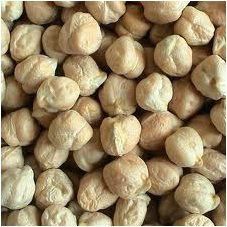
Chick Peas
Get Price Quote
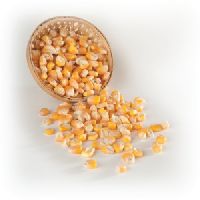
Yellow Corn Maize
Get Price Quote
Indian Yellow Corn Maize, which is procured from the hinterland of India; uniform grain sizes; excellent resistance to blight. The importance of maize or corn lies in its wide variety of applications besides serving as human food and animal feed. It is also a source for a large number of industrial products - maize corn, corn starch, corn oil, baby corn, popcorn, dairy feed, poultry feed, piggery, agro-industries, and so on. Maize is now widely cultivated around the world, and a greater weight of maize is produced each year than any other grain. India, Asia's second-largest grower of maize after China, generally exports around two to three million tonnes of maize a year in global trade of about 90 million tonnes. Livestock feed-makers in Malaysia, Thailand and Indonesia are among the buyers of Indian maize as they seek substitutes to supplies from the U.S. and Latin America.

Chick Peas
Get Price Quote
Chickpeas are edible legumes belonging to the family of 'Fabaceae' with slightly round & irregular shape, and are slightly longer in size than the normal peas. They are also known by the names of 'garbanzo beans', and have a nut like taste with a high protein content in them. The plants of the chickpeas grow between 20-25 cm and have feathery leaves on both sides of the stem. The scientific name of chickpeas is 'Cicer arietinum', and they are also known as 'chana' in Hindi and several other names like 'Bengal Gram', 'Kadaale Kaalu', 'Sanaga Pappu', 'Shimbra', etc. Chickpeas can grow well only in sub tropical and tropical climates requiring an annual rainfall of more than 400 mm. Peas are the part of legume family and also known as dried peas. In latin they are called pisum sativum. Yellow and green peas are the two varieties which are widely grown in the world and traded. Peas are highly nutritious and are an excellent source of vitamins, proteins and carbohydrates. Canada is the largest producer and exporter of peas in world market. Canada is estimated to grow around 3 million tons yearly. Though India too stands as one of the top producers of peas, its local demand is so high that it has to import yellow and green peas in large quantities. India's annual food inflation higher to 11.47 percent for the week ended Aug 28 from 10.86 percent for the week before. India is likely to produce a record pulses crop of 16.5 million tons in 2010-11 due to improved acerage and adequate rainfall. India is the world's largest consumer of pulses, and higher output will help it reduce imports from around 3 million tons a year. The 4th Advanced Estimates of crop production for Year 2009-10 puts Indian pulses production at 14.59 million tonnes including 7.35 million tonnes for chickpeas. Prices of pulses in India are expected to come down due to prospect of good local arrival and the import support of 7-8 lakh tonne contracted by the government and the private parties, which will come at all the ports. India’s second-largest producer Maharashtra’s summer pulses harvest is likely to jump 65%, which contributes a fifth of India’s total production. As on Sept. 2 area under kharif pulses stood at 10.95 million hectares, compared to 9.02 million hectares a year ago. Canada, United States, France & Australia are the major exporters of peas in world. India is the largest importer of peas in international market. Spain, Bangladesh, Belgium, China, Pakistan, South America are the other major importers of yellow and green peas. Canadian Peas Export Market: Canadian pea exports are comprised of edible pea and feed pea exports. Canada exports mainly edible pea variety to Asian market while Spain import feed pea variety in huge quantity. The most important import region for Canadian edible peas is Asia - India, Pakistan, Bangladesh & China. Feed pea exports almost exclusively go to Europe with Spain being the single most important feed pea customer. According to FAO data, Canada’s share of the world pea exports amounted to 46.7 percent of total exports in 2003. Canada’s major direct competitors into the export markets are France, Australia and the U.S.A. France primarily competes with Canada in the European feed and edible pea markets, and in the Indian edible pea market. Australia is a competitor into the Indian Subcontinent not just with its pea but desi chickpeas too. Australian new crop peas start entering the market in December European pea crop enters the markets in late July/ August. The U.S.A. is primarily a competitor in the South American markets. The U.S. competition is especially tough in green peas because the U.S. have better colour and overall quality than Canadian peas. North Dakota is the major dry edible peas growing state in U.S. followed by Montana. Idaho, Oregon and Washington are the other peas producing states in U.S. The prices of peas mainly depends upon the world production mainly in North Amercia, world demand of which Asian demand has higher significance and chickpeas prices with which it competes in lower range pulses segment. Types of Chickpeas Chickpeas come in two basic varieties. These are: Desi Chickpeas: These are split peas and are relatively smaller in size with dark, small seeds and a rough coat. Desi peas are also known as 'Bengal gram' or 'kala chana'. They are mostly cultivated in India, Mexico, Ethiopia and Iran. Desi chickpeas have a remarkably high fiber content and are thus suitable for people suffering from diabetes Kabuli Chickpeas: These chickpeas are light, almost whitish cream in color, with larger seeds and a smoother coat as compared to the desi chickpeas. Introduced in India during the 18th century, the kabuli chickpeas are mainly grown in Southern Europe, Northern Africa, Chile and Afghanistan. Quality specification for treding Desi Chana The material should be free of Mathara and Khesari and live infestation Foreign Matter (Other than Varietal admixture) 1% basis Green (Cotyledon colour), Immature, Shrunken, Shriveled Seeds 3% basis Brokens, Splits; 2% basis Damaged and Weeviled 3% basis (Weeviled 2% max) Moisture 10% basis Varietal admixture 3% Max. Kantawalla Chana The material should be free of Mathara and Khesari and live infestation Foreign Matter (Other than Varietal admixture) 1% basis Green (Cotyledon colour), Immature, Shrunken, Shriveled Seeds 3% basis Broken, Splits 3% basis Damaged and Weeviled 3% basis (Weeviled max 2%) Moisture 10% basis Varietal admixture 3% Max. Types of Chickpeas Chickpeas come in two basic varieties. These are: Desi Chickpeas: These are split peas and are relatively smaller in size with dark, small seeds and a rough coat. Desi peas are also known as 'Bengal gram' or 'kala chana'. They are mostly cultivated in India, Mexico, Ethiopia and Iran. Desi chickpeas have a remarkably high fiber content and are thus suitable for people suffering from diabetes Kabuli Chickpeas: These chickpeas are light, almost whitish cream in color, with larger seeds and a smoother coat as compared to the desi chickpeas. Introduced in India during the 18th century, the kabuli chickpeas are mainly grown in Southern Europe, Northern Africa, Chile and Afghanistan. Quality specification for treding Desi Chana The material should be free of Mathara and Khesari and live infestation Foreign Matter (Other than Varietal admixture) 1% basis Green (Cotyledon colour), Immature, Shrunken, Shriveled Seeds 3% basis Brokens, Splits; 2% basis Damaged and Weeviled 3% basis (Weeviled 2% max) Moisture 10% basis Varietal admixture 3% Max . Indian scenario Chana or Chickpea is a major pulse crop in the Indian subcontinent and several other countries. Known for rich protein content, chana is used as an edible seed as well as making flour. Chana is broadly divided into two categories – Kabuli and Desi-- according to the colour, seed size and taste. India is the leading producer and consumer of chana in the world. The Indian production is estimated to be between 4-7 million tons per year. Normally chana accounts for around 40 percent of India’s total pulses crop production of 12-15 million tons. Major producing states are Madhya Pradesh, Uttar Pradesh, Rajasthan and Maharashtra. A fragmented market with a very long value chain is the main characteristics of the present chana market scenario in the country. Commission agents, brokers, wholesalers, flourmills and retail outlets are the key players in the market. Chana can withstand moisture stress to a certain extent. However, the production highly fluctuates between years, depending on the rains received and the moisture availability in the soil. The sentiments of traders play a significant role currently, as a consequence of the lack of free-flow of information. There is also high substitutability between pulses in India among the consumers. So the price of other major pulses like tur, yellow peas, green peas etc also influence the prices of chana. Besides output and demand, other key parameters shaping chana prices include carry over stocks, imports and the extent of substitution with other pulses. Major Trading Centers Indore, Bhopal, Vidisha in Madhya Pradesh. Jalgaon, Latur, Mumbai, Akola in Maharashtra. Jaipur, Bikaner, Kota, Jodhpur, Sriganaganagar, Hanumangarh in Rajasthan. Other major centers are Delhi, Chennai, Kanpur, Hapur, Hyderabad, Vijayawada, Gulbarga, Sirsa, Jalandhar, Ludhiana, Sangrur. Import/Export Besides domestic output, India also imports around 300,000-400,000 ton chana per year. Main countries of imports are Canada, Australia, Iran and Myanmar. There are currently only four significant exporters of chickpeas - Turkey, Australia, Mexico and Syria. The U.S. is the fifth largest exporter but that country imports much, much more, mainly Kabulis, than it exports.India is the largest importer of chickpeas. India accounts for over 30% of all imports, almost all desis. Pakistan, Spain, and Bangladesh are the other three major importers. India and surrounding countries import mainly the desi type, while countries in North and South America, Europe, the Middle East and Africa import mainly the kabuli type. The price difference between desis and kabulis is partly related to the end user market. Kabulis tend to be used in relatively more affluent countries. Desis are primarily consumed on the Indian sub-continent where purchasing power isn't as great. Desi prices generally track edible yellow pea prices but at a considerable premium. Major Chickpeas Producers in the World Chickpeas are a versatile crop that are grown in almost every part of the globe today. Some of the major producers of desi chickpeas are India, Pakistan, Myanmar, Australia and Bangladesh while the top producers of kabuli chickpeas are Turkey, Iran, Spain, Canada, Syria, USA, Ethiopia, Tanzania, Tunisia, Sudan, Malawi and Portugal. India is the largest producer of chickpeas followed by Pakistan, Turkey and Iran. In fact, about 70% of the total world production of chickpeas is dominated by India. Factor affecting Productivity and the Price trend Rainfall pattern and temperature Total area covered Arrivals in the markets Demand from millers, stockists and retailers Production in the International markets. Production and trends of other pulses namely Urad and Tur in domestic andinternational markets and price of Yellow Pea. Import and export policies by the Indian Govt. Market Influencing Factors Chana can withstand moisture stress to a certain extent. However, the production highly fluctuates between years, depending on the rains received and the moisture availability in the soil. The sentiments of traders play a significant role currently, as a consequence of the lack of free-flow of information. Stocks present with stockists and the stocks-to-consumption ratio. Imports and the crop situation in the countries from where imports originate, viz., Canada, Australia, Myanmar. There is high substitutability between pulses in India among the consumers. So the price of other major pulses like tur, yellow peas, green peas etc also influence the prices of chana. Prouction in India Chana is produced in MP, Rajasthan, UP, Maharashtra, AP, Karnataka and Gujarat. Its sowing starts in October and lasts till December. First arrival starts in Karnataka during Nov end while the last arrival in North Rajasthan is during April. Most of the area for chana is rain-fed but irrigation facilities are also available in some producing areas. Total annual consumption of India is nearly 50-55 lakh tons which fluctuates with the price movement. Madhya Pradesh (MP) MP is the main chana producing area in India. During 2007-08, around 18 lakh tons were produced with nearly 22.11 lakh hectare sowing area. Production figure in expected to increase in 2008-09 as sowing area has increased to 26.31 lakh hectares. But overall production would also depend on weather conditions. If it remains favorable, production may increase here. Nearly entire MP produces chana but due to good irrigation facilities in nearby places of Satna, farmers are taking interest in paddy cultivation also. Here, nearly 12 types of chana are produced but Kantewala quality has the maximum production. Sowing starts during October to November while arrival starts in March. An Introduction to Chickpeas Chickpeas are edible legumes belonging to the family of 'Fabaceae' with slightly round & irregular shape, and are slightly longer in size than the normal peas. They are also known by the names of 'garbanzo beans', and have a nut like taste with a high protein content in them. The plants of the chickpeas grow between 20-25 cm and have feathery leaves on both sides of the stem. The scientific name of chickpeas is 'Cicer arietinum', and they are also known as 'chana' in Hindi and several other names like 'Bengal Gram', 'Kadaale Kaalu', 'Sanaga Pappu', 'Shimbra', etc. Chickpeas can grow well only in sub tropical and tropical climates requiring an annual rainfall of more than 400 mm. Peas are the part of legume family and also known as dried peas. In latin they are called pisum sativum. Yellow and green peas are the two varieties which are widely grown in the world and traded. Peas are highly nutritious and are an excellent source of vitamins, proteins and carbohydrates. Canada is the largest producer and exporter of peas in world market. Canada is estimated to grow around 3 million tons yearly. Though India too stands as one of the top producers of peas, its local demand is so high that it has to import yellow and green peas in large quantities. India's annual food inflation higher to 11.47 percent for the week ended Aug 28 from 10.86 percent for the week before. India is likely to produce a record pulses crop of 16.5 million tons in 2010-11 due to improved acerage and adequate rainfall. India is the world's largest consumer of pulses, and higher output will help it reduce imports from around 3 million tons a year. The 4th Advanced Estimates of crop production for Year 2009-10 puts Indian pulses production at 14.59 million tonnes including 7.35 million tonnes for chickpeas. Prices of pulses in India are expected to come down due to prospect of good local arrival and the import support of 7-8 lakh tonne contracted by the government and the private parties, which will come at all the ports. India’s second-largest producer Maharashtra’s summer pulses harvest is likely to jump 65%, which contributes a fifth of India’s total production. As on Sept. 2 area under kharif pulses stood at 10.95 million hectares, compared to 9.02 million hectares a year ago. Canada, United States, France & Australia are the major exporters of peas in world. India is the largest importer of peas in international market. Spain, Bangladesh, Belgium, China, Pakistan, South America are the other major importers of yellow and green peas. Canadian Peas Export Market: Canadian pea exports are comprised of edible pea and feed pea exports. Canada exports mainly edible pea variety to Asian market while Spain import feed pea variety in huge quantity. The most important import region for Canadian edible peas is Asia - India, Pakistan, Bangladesh & China. Feed pea exports almost exclusively go to Europe with Spain being the single most important feed pea customer. According to FAO data, Canada’s share of the world pea exports amounted to 46.7 percent of total exports in 2003. Canada’s major direct competitors into the export markets are France, Australia and the U.S.A. France primarily competes with Canada in the European feed and edible pea markets, and in the Indian edible pea market. Australia is a competitor into the Indian Subcontinent not just with its pea but desi chickpeas too. Australian new crop peas start entering the market in December European pea crop enters the markets in late July/ August. The U.S.A. is primarily a competitor in the South American markets. The U.S. competition is especially tough in green peas because the U.S. have better colour and overall quality than Canadian peas. North Dakota is the major dry edible peas growing state in U.S. followed by Montana. Idaho, Oregon and Washington are the other peas producing states in U.S. The prices of peas mainly depends upon the world production mainly in North Amercia, world demand of which Asian demand has higher significance and chickpeas prices with which it competes in lower range pulses segment. Types of Chickpeas Chickpeas come in two basic varieties. These are: Desi Chickpeas: These are split peas and are relatively smaller in size with dark, small seeds and a rough coat. Desi peas are also known as 'Bengal gram' or 'kala chana'. They are mostly cultivated in India, Mexico, Ethiopia and Iran. Desi chickpeas have a remarkably high fiber content and are thus suitable for people suffering from diabetes Kabuli Chickpeas: These chickpeas are light, almost whitish cream in color, with larger seeds and a smoother coat as compared to the desi chickpeas. Introduced in India during the 18th century, the kabuli chickpeas are mainly grown in Southern Europe, Northern Africa, Chile and Afghanistan. Quality specification for treding Desi Chana The material should be free of Mathara and Khesari and live infestation Foreign Matter (Other than Varietal admixture) 1% basis Green (Cotyledon colour), Immature, Shrunken, Shriveled Seeds 3% basis Brokens, Splits; 2% basis Damaged and Weeviled 3% basis (Weeviled 2% max) Moisture 10% basis Varietal admixture 3% Max. Kantawalla Chana The material should be free of Mathara and Khesari and live infestation Foreign Matter (Other than Varietal admixture) 1% basis Green (Cotyledon colour), Immature, Shrunken, Shriveled Seeds 3% basis Broken, Splits 3% basis Damaged and Weeviled 3% basis (Weeviled max 2%) Moisture 10% basis Varietal admixture 3% Max. Types of Chickpeas Chickpeas come in two basic varieties. These are: Desi Chickpeas: These are split peas and are relatively smaller in size with dark, small seeds and a rough coat. Desi peas are also known as 'Bengal gram' or 'kala chana'. They are mostly cultivated in India, Mexico, Ethiopia and Iran. Desi chickpeas have a remarkably high fiber content and are thus suitable for people suffering from diabetes Kabuli Chickpeas: These chickpeas are light, almost whitish cream in color, with larger seeds and a smoother coat as compared to the desi chickpeas. Introduced in India during the 18th century, the kabuli chickpeas are mainly grown in Southern Europe, Northern Africa, Chile and Afghanistan. Quality specification for treding Desi Chana The material should be free of Mathara and Khesari and live infestation Foreign Matter (Other than Varietal admixture) 1% basis Green (Cotyledon colour), Immature, Shrunken, Shriveled Seeds 3% basis Brokens, Splits; 2% basis Damaged and Weeviled 3% basis (Weeviled 2% max) Moisture 10% basis Varietal admixture 3% Max . Indian scenario Chana or Chickpea is a major pulse crop in the Indian subcontinent and several other countries. Known for rich protein content, chana is used as an edible seed as well as making flour. Chana is broadly divided into two categories – Kabuli and Desi-- according to the colour, seed size and taste. India is the leading producer and consumer of chana in the world. The Indian production is estimated to be between 4-7 million tons per year. Normally chana accounts for around 40 percent of India’s total pulses crop production of 12-15 million tons. Major producing states are Madhya Pradesh, Uttar Pradesh, Rajasthan and Maharashtra. A fragmented market with a very long value chain is the main characteristics of the present chana market scenario in the country. Commission agents, brokers, wholesalers, flourmills and retail outlets are the key players in the market. Chana can withstand moisture stress to a certain extent. However, the production highly fluctuates between years, depending on the rains received and the moisture availability in the soil. The sentiments of traders play a significant role currently, as a consequence of the lack of free-flow of information. There is also high substitutability between pulses in India among the consumers. So the price of other major pulses like tur, yellow peas, green peas etc also influence the prices of chana. Besides output and demand, other key parameters shaping chana prices include carry over stocks, imports and the extent of substitution with other pulses. Major Trading Centers Indore, Bhopal, Vidisha in Madhya Pradesh. Jalgaon, Latur, Mumbai, Akola in Maharashtra. Jaipur, Bikaner, Kota, Jodhpur, Sriganaganagar, Hanumangarh in Rajasthan. Other major centers are Delhi, Chennai, Kanpur, Hapur, Hyderabad, Vijayawada, Gulbarga, Sirsa, Jalandhar, Ludhiana, Sangrur. Import/Export Besides domestic output, India also imports around 300,000-400,000 ton chana per year. Main countries of imports are Canada, Australia, Iran and Myanmar. There are currently only four significant exporters of chickpeas - Turkey, Australia, Mexico and Syria. The U.S. is the fifth largest exporter but that country imports much, much more, mainly Kabulis, than it exports.India is the largest importer of chickpeas. India accounts for over 30% of all imports, almost all desis. Pakistan, Spain, and Bangladesh are the other three major importers. India and surrounding countries import mainly the desi type, while countries in North and South America, Europe, the Middle East and Africa import mainly the kabuli type. The price difference between desis and kabulis is partly related to the end user market. Kabulis tend to be used in relatively more affluent countries. Desis are primarily consumed on the Indian sub-continent where purchasing power isn't as great. Desi prices generally track edible yellow pea prices but at a considerable premium. Major Chickpeas Producers in the World Chickpeas are a versatile crop that are grown in almost every part of the globe today. Some of the major producers of desi chickpeas are India, Pakistan, Myanmar, Australia and Bangladesh while the top producers of kabuli chickpeas are Turkey, Iran, Spain, Canada, Syria, USA, Ethiopia, Tanzania, Tunisia, Sudan, Malawi and Portugal. India is the largest producer of chickpeas followed by Pakistan, Turkey and Iran. In fact, about 70% of the total world production of chickpeas is dominated by India. Factor affecting Productivity and the Price trend Rainfall pattern and temperature Total area covered Arrivals in the markets Demand from millers, stockists and retailers Production in the International markets. Production and trends of other pulses namely Urad and Tur in domestic andinternational markets and price of Yellow Pea. Import and export policies by the Indian Govt. Market Influencing Factors Chana can withstand moisture stress to a certain extent. However, the production highly fluctuates between years, depending on the rains received and the moisture availability in the soil. The sentiments of traders play a significant role currently, as a consequence of the lack of free-flow of information. Stocks present with stockists and the stocks-to-consumption ratio. Imports and the crop situation in the countries from where imports originate, viz., Canada, Australia, Myanmar. There is high substitutability between pulses in India among the consumers. So the price of other major pulses like tur, yellow peas, green peas etc also influence the prices of chana. Prouction in India Chana is produced in MP, Rajasthan, UP, Maharashtra, AP, Karnataka and Gujarat. Its sowing starts in October and lasts till December. First arrival starts in Karnataka during Nov end while the last arrival in North Rajasthan is during April. Most of the area for chana is rain-fed but irrigation facilities are also available in some producing areas. Total annual consumption of India is nearly 50-55 lakh tons which fluctuates with the price movement. Madhya Pradesh (MP) MP is the main chana producing area in India. During 2007-08, around 18 lakh tons were produced with nearly 22.11 lakh hectare sowing area. Production figure in expected to increase in 2008-09 as sowing area has increased to 26.31 lakh hectares. But overall production would also depend on weather conditions. If it remains favorable, production may increase here. Nearly entire MP produces chana but due to good irrigation facilities in nearby places of Satna, farmers are taking interest in paddy cultivation also. Here, nearly 12 types of chana are produced but Kantewala quality has the maximum production. Sowing starts during October to November while arrival starts in March. Rajasthan Rajasthan is the second largest chana producing state in the country. During 2007-08, nearly 11 lakh ton chana was produced here with sowing figure of around 12.68 lakh hectares. However, production is expected to decrease in 2008-09 as cultivation area has reduced to a mere 10.32 lakh hectare. Many farmers have preferred cultivation of RM Seed due to better returns. Here, chana is cultivated as a rain-fed (Barani) crop in all the districts. So production figure fluctuates year to year. Rajasthan has the capacity to produce around 25-30 lakh tons chana if rains occur on time and farmers take full interest in its sowing. Mostly desi chana is produced in Rajasthan. Sowing starts in November to December which converts in arrival during March. Uttar Pradesh Chana is produced in southern parts of the state but its quality is low due to its slight mild toxic nature. Here, 5 lakh tons chana was produced in 2007-08 with the cultivation figure of nearly 5.88 lakh hectare. This is expected to increase to 8.49 lakh hectare in 2008-09. So, production is expected to increase during this period. It is cultivated in November while arrival starts in February. Maharashtra Maharashtra is famous for producing good quality of chana like Govran, Chapa, and Annagiri. However, some other famous desi qualities are also produced here. During 2007-08, nearly 7 lakh tons chana was produced. This is expected to fall in 2008-09 as sowing area has decreased to 8.84 lakh hectare from 10.32 lakh hectare in 2007-08 due to lack of good rains. As per traders, production figure may fall to nearly 5 lakh ton here. Sowing time starts in October while arrival starts in January. Andhra Pradesh Mainly Annagiri quality is produced here. Around 4 lakh ton chana was produced during 2007-08 with a sowing figure of nearly 6.70 lakh hectare. However, production is likely to fall during 2008-09 in spite of increased sowing area, as rains did not occur timely. Telengana is the main producing belt of the state. Karnataka Mosami, Annagiri and Gulabi chana are the main qualities which are produced in Karnataka. During 2007-08, around 3 lakh tons chana was produced here with sowing figure of nearly 6.84 lakh hectare. In 2008-09, production is expected to increase slightly as sowing area has increased to 8.07 lakh hectare. Gujarat Gujarat produces a mere ~2 lakh tons chana in spite of being a big consuming state. Chana is produced here in Saurashtra, Kutch and northern Gujarat. With a rise in sowing area, chana production in the country is expected to increase to 55 lakh tons during 2008-09. As per traders, if more rains occur and weather remain favorable, production figure may touch the level of nearly 60 lakh tons. During 2007-08, around 52 lakh tons chana was produced. Its prices mainly depend on the price of peas as traders prefer to make besan from it rather than chana. Moreover, around 1.50 lakh ton chana is also imported from mainly Australia, Tanzania and Myanmar every year.
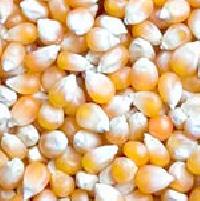
Yellow Maize
Get Price Quote
We are offering yellow maize, maize contains 60 to 68% starch and 7 to 15% protein. Opaque seeded types are more nutrition's and contains a high percentage of essential amino acids. The embryo which forms about 12% of the whole grain is the source of protein, fats and sugars. Yellow maize is the richest sources of vitamin-a. Maize has more riboflavin than wheat or rice and is rich in phosphorous and potash. we are engaged in exporting yellow maize for animal consumption at market leading prices. The yellow maize for animal is carefully processed under the supervision of experts. The product is highly beneficial for the health of animals.

Potato
Get Price Quote
All types of potatoes in good n export quality large quantity available sizes - 40 mm to 80 mm. Packaging - 60 kgs leno bags
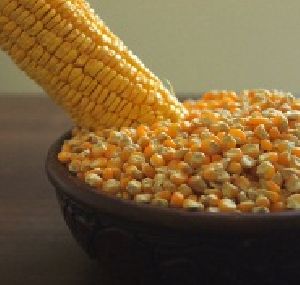
Yellow Maize
Get Price Quote

Garlic
67,500 Per Metric Ton
18 Metric Ton (MOQ)
Garlic is a hardy, bulbous, rooted, perennial plant with narrow flat leaves and bears small white flowers and bulbils. The compound bulb consists of 6 to 34 bulblets called ã¢ï¿½ï¿½clovesã¢ï¿½ï¿½ which are surrounded by a common, thin, white or pinkish papery sheet. Garlic has a strong flavour and taste.

Chick Peas
Get Price Quote
grain sorghum

Dried & Preserved Vegetables
Get Price Quote

Chick Peas
Get Price Quote

Garlic
Get Price Quote
Trade world enterprises - we are one of the trusted names for exporting of high quality fresh garlic from india.

Chick Peas
Get Price Quote

Indian Fresh Vegetables
Get Price Quote
Trading, Flour, Seeds, Oil Seeds, Spray Dried Powders, Dehydrated Food

Yellow Corn
Get Price Quote
we offer Yellow Corn (Maize) :- In India Maize is grown in both Kharif and Rabi Season. The Indian Maize crop is estimated to be 21.5 MYN MT, 80% of the crop is Kharif and 20% is Rabi Crop. Maize has got widespread usage in Industries like Animal Feed-poultry and cattle, Wet & Dry corn Milling, Grain Based Distilleries and lastly for Human consumption as food. Lately Indian Maize is getting very well accepted in world markets and exports are continuously rising to South East, Far East and Middle East Asian Nations. Indian Maize has another quality which is that it is a NON GMO Maize.

Onion
Get Price Quote
Cement

Chick Peas
Get Price Quote